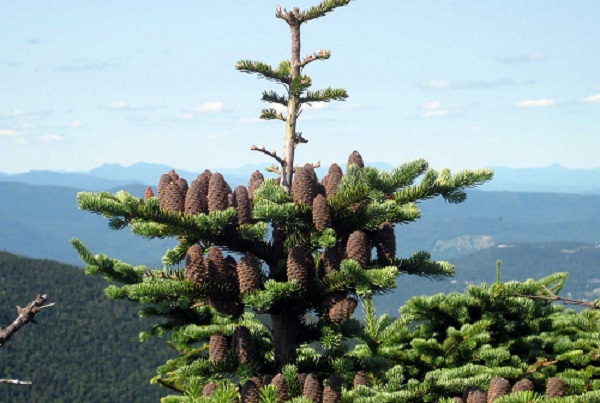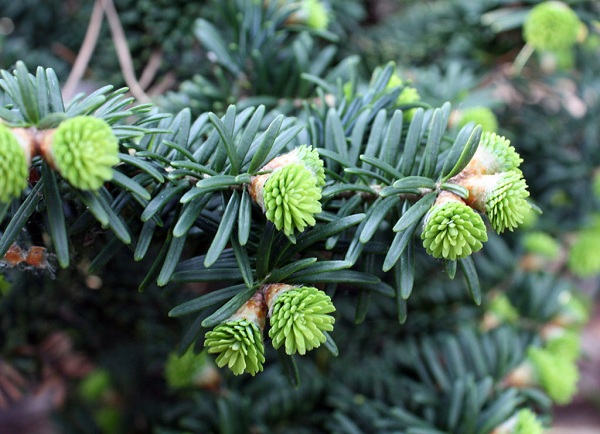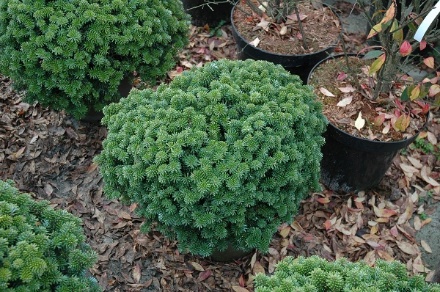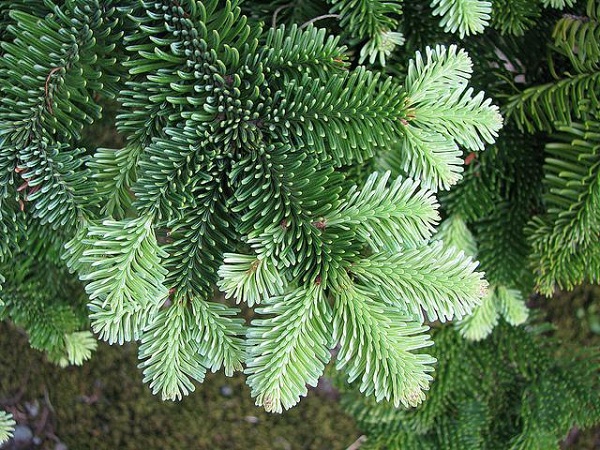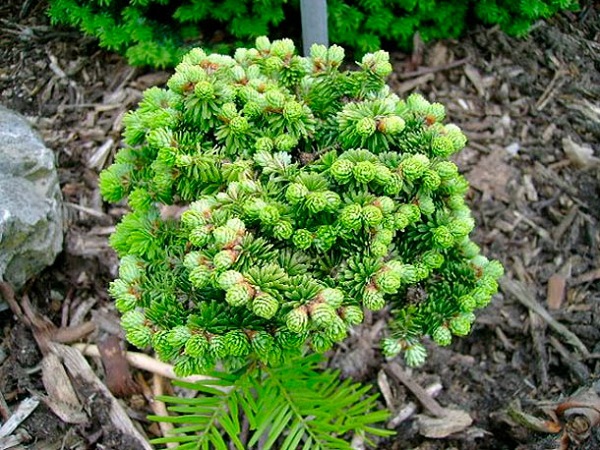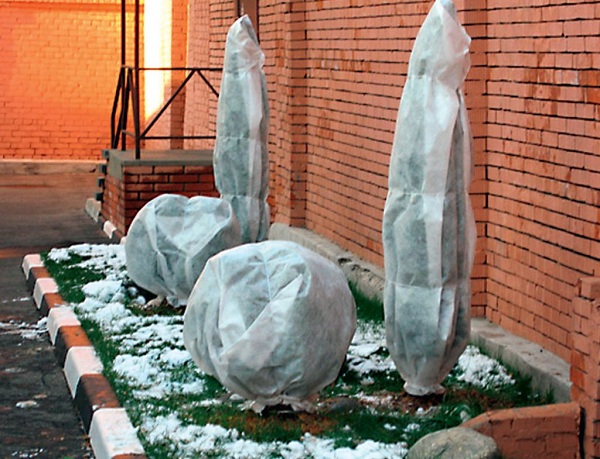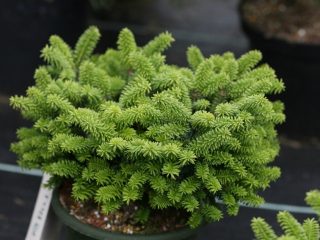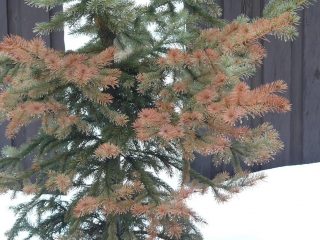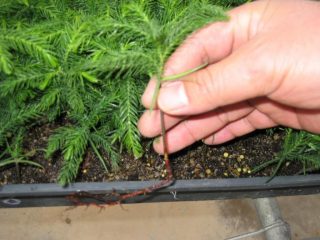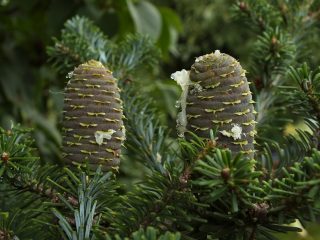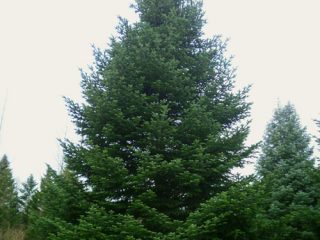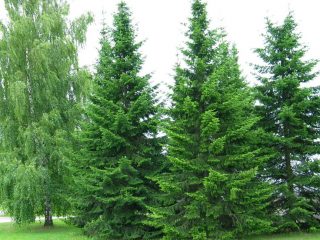Content
Balsam fir is an evergreen ornamental plant with medicinal properties. The homeland of the coniferous tree is North America, where pine species predominate. Fir is actively used by gardeners and landscape designers to create comfort and style on the site. The plant is adapted to all climatic zones, so there are no special difficulties in growing.
Description of balsam fir
The description of the tree cannot be reduced to one characteristic, because more than 50 species of balsamic fir have been bred, and 20 of them are decorative. Common fir grows rapidly in natural conditions up to 14-25 m. The needles are ring-shaped, shiny and smooth. Depending on the variety, the color of the crown in the upper part is dark or light green, in the lower part it is greenish-white or matte green. The length of the needles is 2-4 cm, the width is from 1 to 3 mm. Crown diameter - 4-7 m. The top of the fir is blunt-conical, bifurcated.
Shoots are rounded, brown. Cones are elongated, obtuse, reddish-brown when ripe, matte gray-violet when young. The fir is self-pollinated by the wind through the male flowers in the form of small earrings. After ripening, the buds fall off on their own. A rod remains on the fir from the bud. New needles are renewed on the branches every 4-5 years and have a resinous and tart aroma. Balsam fir tolerates drought well, frosts down to -40-45 ° С.
Ornamental varieties grow up to 1-2 m. The crown is trapezoidal, spherical or flattened, there are several tops that need to be cut off during growth. The branches are thickened, there is no knotty. Cones grow from 3 to 5 cm. The color of the needles is from bright green to blue. The average lifespan of a wild and ornamental tree is from 250 years.
Where does balsam fir grow
Most of the varieties of balsam fir grows in Canada, USA, the range extends from the shores of the Pacific to the Atlantic Ocean. After the introduction of some varieties to the territory of Russia, good growth rates were observed in all forest loamy zones of the country. In the taiga and the middle climatic zone, the plant reproduces independently on a large scale. However, fir cannot be found in the forest-steppe or steppe zones - the soil is of poor quality.
Use in landscape design
In landscape design, balsamic needles are used to complete the image of a thematic or classic style of garden composition. With the presence of an evergreen tree, a harmonious atmosphere appears on the site even in the winter season. Trees are often planted in front of summer cottages, using a single planting pattern or combining the plant with other dwarf varieties. For example, the Brilliant fir variety has an original crown shape and small growth, which allows you to compactly place several trees in front of the house or along a garden path. These trees are combined with other pine species: cypress, boxwood, juniper, thuja.Pine needles are popular in northern, English, or minimalist garden landscapes.
Balsamic fir varieties
Wild varieties rarely take root after transplanting - a change in soil and climate can injure the plant, so dwarf firs are the most popular today. Ornamental conifers are best suited to changeable weather conditions. This allows you to independently cultivate a new variety or grow a fir after transplanting a seedling from one region to another.
Balsam fir Piccolo
Slow growing evergreen bonsai. The plant grows well in acidified soils, which allows you to plant a tree anywhere. In growth it reaches 0.5-1 m, then development stops. The crown is up to 50 cm in diameter. The first few years of cultivation requires regular watering 3-4 times a week. Piccolo develops favorably both in the sun and in the shade, partial shade. Adult needles are green, with the onset of spring, shoots of a bright light green shade appear.
In landscape design, it is present as the main detail of a coniferous garden in Japanese or Alpine style. Landing on a stone path mixed with moss or heather will create a cozy and modern environment. In household use, gardeners independently make a squeeze of fir oil. Flowering and young branches are cut for home decor, and the phytoncides secreted by the Abies Balsamea Piccolo fir kill germs and viruses indoors.
Balsam fir Nana
A shrub from the Pine family, it grows up to 1-1.5 m. The branchiness of the crown reaches 2-2.5 m, the needles are thickened, but pruning of branches is not required. Fir has a bright green hue, the lower branches darken with age. The tree grows into a round or flattened ball. The plant self-pollinates, after the growing season, purple cones appear, which develop on the upper ropes of balsamic needles and ripen by mid-November.
For planting, seedlings are purchased in peat pots with a prolonged substrate, which will allow the plant to quickly take root. Balsamic Nana grows for a long time - 30-40 cm in 10 years. Suitable for decorative cultivation in pots. Experienced gardeners advise replanting fir every 3-4 years in March or November, then rooting will be favorable and the tree will not hurt.
Balsam Fir Diamond
The most widespread and popular type of decorative wood, often found in Russia. The variety was developed in Korea. The growth of the plant stops at 0.5 m. The spherical shape of the tree fits compactly into the modern style of landscape design. Favorable place for balsamic needles Brilliant - shade or partial shade, in these conditions the tree stretches 4-5 cm per year. Water the fir 1-2 times a week. The diamond is not resistant to frost, so for the winter the tree is covered with hay and cloth. The variety can be bred at home with seedlings or seeds.
Other varieties of balsam fir
About 30 varieties of balsamic fir of wild and decorative species grow on the territory of the country. In the natural environment in the forest belt of Russia, you can find the fir varieties Belaya, Makedonskaya, Kavkazskaya or Sakhalin. The lifespan of these varieties is over 300 years. Of the dwarf varieties, Kiwi, Hudsonia, Green Globe, Molly fir rarely come across. They are similar to the Brilliant or Nana varieties, but have some peculiarities when grown. For example, if the Piccolo balsam fir is unpretentious in planting and care, then Molly or Kiwi need a strict watering schedule, pruning and spraying, so these varieties are rarely purchased for landscape design.
Planting and caring for balsam fir
You can plant a decorative tree in any season of the year, except for winter. If possible, there should be a reservoir with shade or partial shade nearby.In order for the fir to initially begin to bring aesthetic pleasure, it is necessary to observe the planting rules and organize watering and feeding.
Seedling and planting plot preparation
For planting, seedlings are purchased 3-4 years old, when the plant reaches 20-25 cm in growth. Wild varieties can be grown from seeds or cuttings. The roots of purchased seedlings are examined for root cancer, rot, or other damage. When viewed, the needles should not crumble, be faded or yellowed. Dry branches are cut to living tissue. Before planting, the fir is hardened by temperature drops: they are placed in the refrigerator for 3 hours, then in a warm place. The planting is carried out together with the root soil.
Balsam fir grows poorly on heavy soils, it does not always take root on sandy or black earth soil. Good growth and rooting is observed on loams and slightly acidic soils. The seat is harvested 5-10 days before planting. Heavy soils are diluted with drainage. Dig a hole 50 cm in depth and width, pour drainage or small pebbles on the bottom. The distance between trees should be from 2-3 m, although the parameter depends on the type of seedling. Before planting, the soil is disinfected.
Landing rules
Description and planting rules for balsam fir are standard regardless of the variety chosen. In order for rooting to go well, you need to follow these rules:
- the drainage layer should be at least 20-30 cm;
- it is better to sprinkle a layer of mixed fertilizers on top of crushed stone or pebbles;
- the root collar should be flush with the ground;
- young seedlings with a thin trunk should not be purchased;
- the optimal time for planting is March or September, for transplanting is November or April.
The roots of the planting material are moistened with water, which is mixed with a small amount of growth stimulants. The seedlings are placed on the substrate layer and covered with the remaining soil. Aryk is formed around the trunk for irrigation. Balsamic needles are watered with a little water. Young trees are not resistant to strong gusts of wind, so the fir is tied to a trellis or planted next to the fence.
Watering and feeding
Balsam fir is responsive to frequent watering, but the soil should not be flooded. At the first watering, 1 tree should take up to 2-3 liters. An adult tree needs up to 10-15 liters of water. Up to 2-3 waterings per week. In the hot summer season, the frequency of watering is increased to daily 4-5 times a week.
Fir is fed 2-3 times every year. Manure, potash additives, wood ash are suitable as fertilizers. The first feeding is done 2-3 years after planting. The gardener is recommended to carry out additional feeding according to the seasons:
- in the spring to apply manure or bird droppings;
- in summer, with active growth, a small amount of compost is added to the soil;
- at the end of November or before the first frost, the needles are fed with superphosphates.
Mulching and loosening
Fir roots quickly overgrow weed, therefore, after each watering, you need to loosen the soil and remove weeds. For the winter and for long-term preservation of moisture, the irrigation ditches around the trunk are mulched with hay, sawdust, and large rubble. The thickness of the layer should be from 10 to 15 cm. The layer of mulch for an adult tree is 20-40 cm.
Pruning
With the onset of spring, decorative varieties are examined for dry or diseased branches. The lower branches are cut by a third or removed completely. To shape, the crown is cut off. A sanitary cut is carried out every season. Tools are disinfected in a solution of manganese or wood ash.
Preparing for winter
For the winter, the tree trunk is whitewashed with lime with an admixture of copper sulfate. The roots are mulched, and the trunk is wrapped with roofing material.The roots are covered with a lapnik 50-80 cm from the trunk, because the root system develops in the upper layers. From rodents, the roots are sprinkled with substances with a pungent odor. With the onset of spring, young trees are covered with a cloth from the sunny side so that the branches do not burn in the sun.
Reproduction
Balsam fir is propagated by cuttings, seeds or seedlings. A young branch with an apical bud, on which there are several shoots, is cut from a one-year-old seedling. The cuttings can be planted directly into the hole or placed in a container with high humidity. Cuttings from 2 or 4-year-old trees take root well.
Seeds are obtained from blossoming cones, which are cut off immaturely together with a branch. The planting material is dried, then soaked and waiting for germination. You can plant several seeds at once and cover the greenhouse. Every day, before the emergence of shoots, the greenhouse is opened for 3-4 hours.
Diseases and pests
Like any coniferous plant, fir is affected by fungal diseases and is attacked by pests. The most dangerous diseases:
- root cancer;
- browning;
- brown shute;
- rust.
The causative agent may be non-compliance with planting rules, poor-quality planting material or insufficient water during irrigation. The appearance of the disease can be avoided by spraying the needles with pesticides, processing with hot or cold fog.
Conclusion
Balsam fir is an ornamental crop that does not pose any particular problems when growing. Dwarf varieties are spreading all over the world, breeders are developing new varieties, which means that the population of evergreen shrubs will not decline. They are unpretentious to growing conditions and bring aesthetic pleasure to the garden landscape or home environment.

